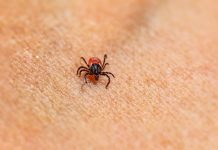Welcoming a new puppy into your home is a heartwarming experience filled with joy, wagging tails, and playful antics. However, along with the excitement of puppyhood comes the responsibility of ensuring your furry friend’s health and safety. One of the most common challenges pet owners face is protecting their puppies from fleas and ticks—tiny pests that can cause big problems. These unwelcome guests not only cause discomfort but can also lead to more serious health issues. In this guide, we’ll explore effective strategies to safeguard your puppy from these pesky parasites, allowing you both to enjoy carefree cuddles and outdoor adventures. With a few proactive steps, you can create a safe and happy environment for your new companion. Let’s dive into the essentials of flea and tick prevention, ensuring your puppy’s journey is as healthy as it is joyful.
Understanding the Threat: Fleas and Ticks Explained
Fleas and ticks are more than just a nuisance; they pose significant health risks to your furry friend. These tiny parasites can cause discomfort and transmit serious diseases. Fleas, for instance, can lead to allergic reactions, skin infections, and even anemia due to blood loss. On the other hand, ticks are notorious for spreading Lyme disease, ehrlichiosis, and other dangerous illnesses.
- Fleas can jump long distances, making it easy for them to latch onto your puppy from the surrounding environment.
- Ticks often hide in grassy or wooded areas, waiting to attach to a passing host.
Understanding these threats is the first step in safeguarding your puppy. Regularly checking your pet for signs of infestation and using preventive treatments are crucial strategies. Be sure to maintain a clean living space, as fleas and ticks can also hide in carpets, bedding, and furniture. By staying informed and proactive, you can protect your puppy from these pesky invaders and ensure a happy, healthy life for your four-legged family member.
Creating a Flea and Tick-Free Home Environment
To protect your puppy from the nuisance and potential health risks of fleas and ticks, it’s crucial to maintain a clean and secure home environment. Begin by ensuring that all bedding, carpets, and upholstery are regularly cleaned and vacuumed. Wash your puppy’s bedding weekly in hot water to kill any pests and their eggs. Additionally, consider using a vacuum with a HEPA filter to capture tiny parasites effectively. Remember, these little creatures love to hide in dark, warm places, so don’t forget to clean under furniture and in corners.
- Yard Maintenance: Keep your garden tidy by trimming tall grass and bushes where fleas and ticks may hide.
- Natural Repellents: Use pet-safe essential oils like lavender or eucalyptus to deter pests. A few drops on a cotton ball placed strategically around your home can be effective.
- Regular Inspections: Check your puppy’s fur regularly, especially after outdoor play, to catch any hitchhiking pests early.
- Professional Pest Control: If infestations are severe, don’t hesitate to call in a professional to treat your home safely.
By taking these proactive steps, you can create a safe haven for your furry friend, ensuring that they can romp and relax without the threat of fleas and ticks.

Choosing the Right Preventative Products for Your Puppy
When it comes to safeguarding your puppy from pesky fleas and ticks, selecting the appropriate preventative products is crucial. Start by consulting your veterinarian, who can offer tailored advice based on your puppy’s breed, age, and lifestyle. It’s important to consider both topical and oral options. Topical treatments, applied directly to the skin, are often preferred for their ease of use and immediate action. Oral preventatives, on the other hand, can provide a systemic defense, ensuring that fleas and ticks are thwarted before they become a problem.
Here are some key factors to consider when choosing the right product:
- Active Ingredients: Look for products containing Fipronil, Permethrin, or Afoxolaner, known for their effectiveness.
- Application Frequency: Decide whether a monthly treatment fits your routine or if a longer-lasting solution would be better.
- Water Resistance: For puppies that love to swim, a water-resistant formula ensures continued protection.
- Safety: Always verify that the product is specifically formulated for puppies to avoid any adverse reactions.
By carefully evaluating these factors, you can ensure that your puppy stays happy, healthy, and free from unwelcome critters.

Natural Remedies and Regular Check-Ups to Keep Your Puppy Safe
Maintaining your puppy’s health involves a harmonious blend of natural remedies and routine veterinary check-ups. To ward off fleas and ticks, consider incorporating natural solutions that are gentle on your puppy’s skin yet effective in pest prevention. Essential oils such as lavender, peppermint, and lemongrass can be diluted and used as a topical spray. Not only do these oils repel pests, but they also leave your pup smelling delightful. Herbal collars infused with natural oils are another alternative, providing ongoing protection without the harsh chemicals found in traditional flea collars.
Alongside natural remedies, it’s crucial to prioritize regular check-ups with your veterinarian. These visits help ensure your puppy remains in optimal health and is free from any flea or tick infestations. During these appointments, your vet can recommend suitable preventative measures tailored to your puppy’s specific needs. Additionally, staying informed about the latest tick and flea control products and methods will equip you with the knowledge to make informed decisions. Together, these practices form a robust defense, keeping your furry friend safe and thriving.
















